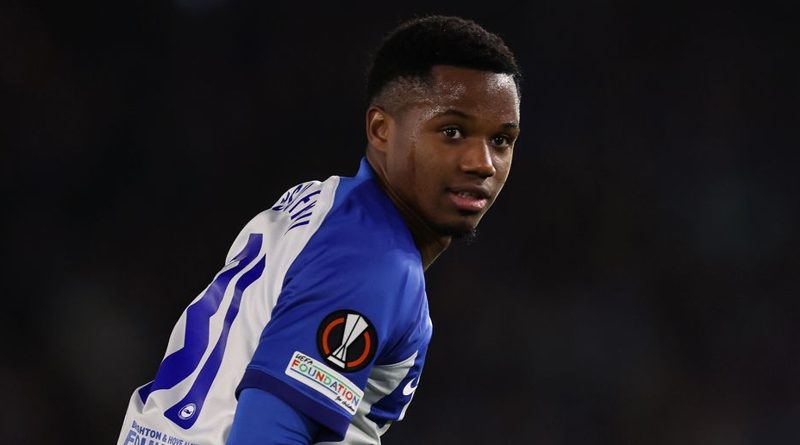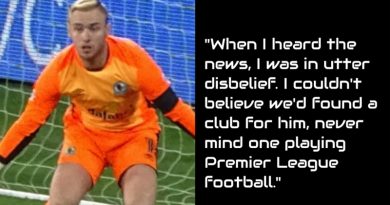Success or failure? Analysing Barcelona star Ansu Fati at Brighton
There has been a lot of debate in recent weeks amongst Brighton fans about Ansu Fati. With his season-long loan from Barcelona approaching its end, has the young Spanish international’s time at the Amex been a success or a failure?
Most Albion supporters seem to be siding with the latter. This would appear to be based on the reputation Fati had when he arrived and his sky high wages, with Brighton rumoured to be contributing anywhere between £140,000 and £160,000 per week.
Has Fati delivered enough to justify the Albion breaking their pay structure to sign him for a season? Almost certainly not. And therein lies the end of the argument for some.
Yet wages are only one way of looking at it. If Brighton had paid a £4 million loan fee for Ansu Fati and contributed £50,000 per week to his wages, they would have spent exactly the same as £160,000 per week. As a famous football finance expert/dullard said when discussing this in a WhatsApp group, it’s all in the optics.
Moving away from money and you can argue that expectations based on reputation were unfair too. Yes, Fati was once heralded the Heir to Messi and a future Ballon d’or winner.
Yes, he is a graduate of the famous La Masia academy. And yes, he set a glut of records at Camp Nou earlier in his career.
The second-youngest player in Barcelona history. Barca’s youngest ever scorer. The youngest player to ever to score and assist in the same La Liga match.
Youngest player to play for Barcelona in the Champions League. Youngest scorer in the history of the competition. Youngest player to bag a La Liga brace. Youngest scorer for the Spanish national team.
Yet the key sentence in the paragraph three up is earlier in his career. A meniscus tear in November 2020 left Fati out of action for nine months, after which a series of other injury problems have followed.
This is not really a surprise. Meniscus tears vary greatly in severity and can be notoriously hard to come back from. Just ask Jose Izquierdo, whose career was effectively ended by one.
It is why there was such concern when Julio Enciso was ruled out with a meniscus problem in August. Touch wood, but his return has gone smoothly enough so far.
Across the 2020-21 and 2021-22 La Liga seasons, Fati played just 17 times. The Ansu Fati signed by Brighton post-meniscus is a very different player to the Ansu Fati who burst onto the scene at Barcelona five years ago.
Are we right to hold him to standards based on his initial emergence at Camp Nou in 2019, when the whole point of his loan to the Albion was to try and help him rebuild his career after three years of fitness problems?
Another way of looking at the success or failure of Fati at Brighton is through cold, hard numbers. From 26 appearances totalling 996 minutes, Fati has scored four times and contributed one assist for a goal involvement every 199 minutes.
That currently makes him more productive in goal involvement terms than both Simon Adingra (207 minutes) and Kaoru Mitoma (230). Joao Pedro in contrast contributes a goal or assist every 99 minutes.
Where things get interesting is when you compare the contributions of Fati in the Premier League and Europa League. He averages a goal involvement every 1.3 games in Europe, compared with every 2.6 matches domestically.
Those numbers back up what we have seen with the naked eye watching Ansu Fati in a Brighton shirt – that he looks more comfortable and better suited to European football than the rough and tumble of England.
He would not be the first 21-year-old to struggle initially with the difference in styles between England and elsewhere. It is why the likes of Enciso, Moises Caicedo and Alexis Mac Allister took anywhere between six and 18 months to adapt and become established in the Albion starting XI.
Unfortunately for Fati, when you are being paid £160,000 per week on a season-long loan, you do not have the time for that sort of patience.
Then there is the difference between Fati’s numbers before the November muscle injury which ruled him out for two months and what he has done since returning.
In 317 Premier League minutes – the equivalent of around three-and-a-half full matches – Fati had contributed two goals, seven on target shots and five big chances.
Fati started all four of the Albion’s opening Europa League Group B matches, providing two goals and one assist.
The eagle-eyed amongst you may have deduced that means all Fati’s goal contributions came in the three months before he was injured.
There can be no doubt the setback has had a serious impact on him, coming as it did at a time when he was starting to find form and fitness.
What would have happened had Fati never picked up that injury at Nottingham Forest? We will never know the answer to that.
But if he maintained his impressive output of September through November, the debate over whether his time at Brighton has been a success or failure would likely be much more skewed towards the former than the latter.
One fascinating subplot of all this came from The Athletic, where Andy Naylor wrote a piece entitled Ansu Fati is in danger of being deemed a failure at Brighton – something needs to change.
Everyone knows Naylor works at times as a mouthpiece for the club. It is why it is so rare to see him criticise players, manager or board in public. To do so would be to risk having his access restricted.
Roberto De Zerbi is said to have pushed for the signing of Fati personally. The article in question suggesting the signing of Fati was a failure came out on February 29th, in the midst of De Zerbi’s public criticism of the Albion’s recruitment. Funny timing, eh?
Don’t worry, that is the one and only conspiracy theory you will read on WAB today. But to answer the original question – has Ansu Fati been a success or failure at Brighton?
It depends on what you expected. He was never likely to rock up at the Amex, score 30 goals and win PFA Player of the Season. If that were the case, he would still be at Barcelona rather than the Albion.
But Brighton are probably also right to have anticipated more than four goals and one assist, even taking into account the injury which brought such a shuddering halt to Fati’s progress.
Ultimately, Fati has looked like a young player finding his way back from a few years out injured playing in a new league in a new country. Which is exactly what he is.




